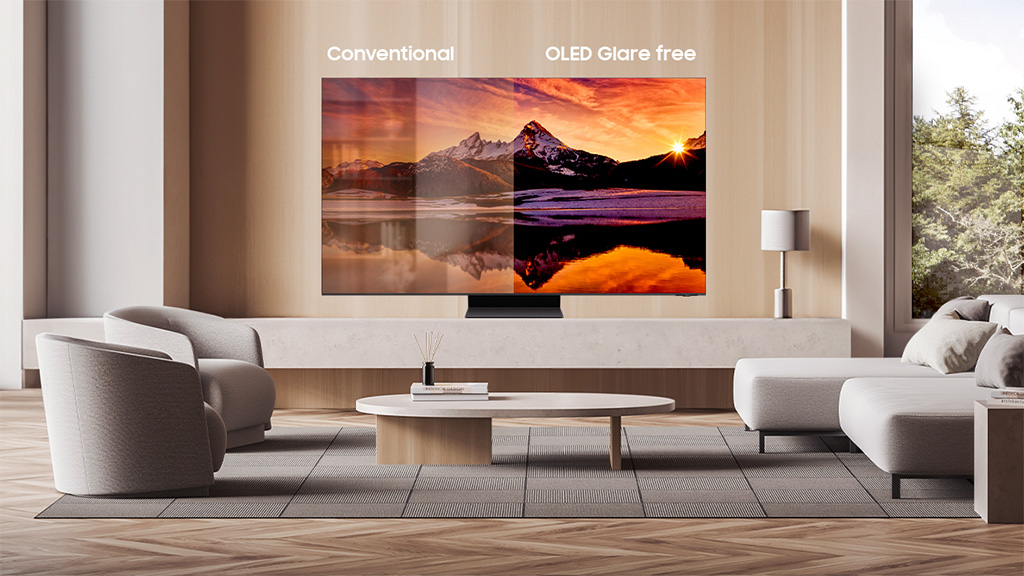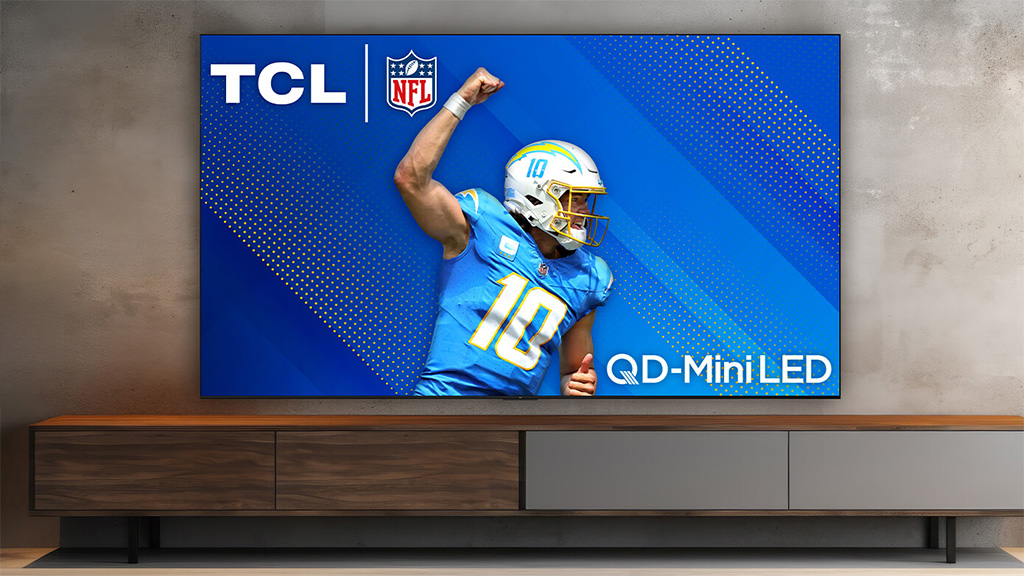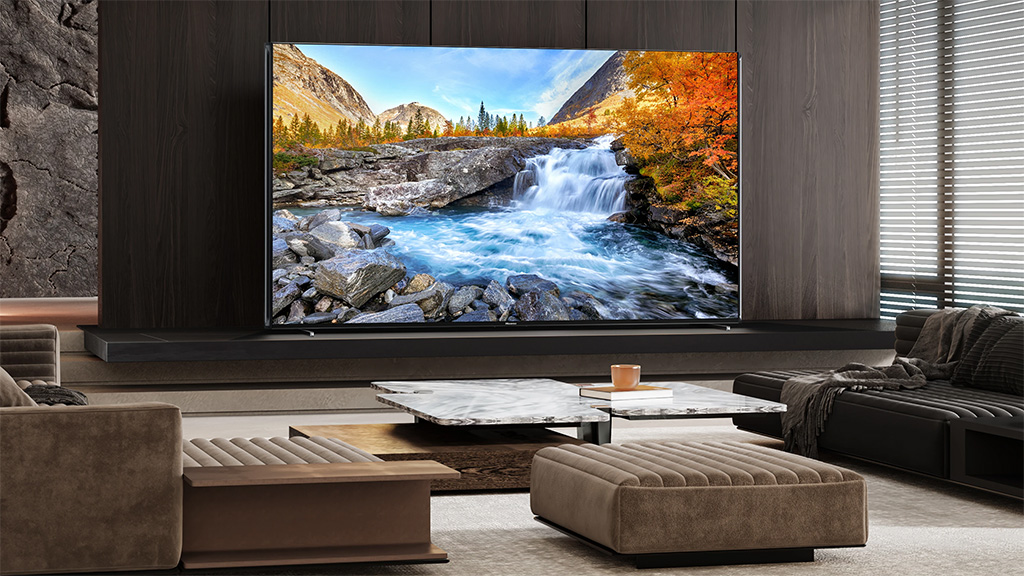Everything seems bigger and brighter in Las Vegas and the latest television screens being shown at CES are no exception. Although many of the bigger screens on display will still command a substantial premium, very large screens are now reaching consumer price points that makes them seem almost affordable. That has big implications for programme makers.
LG showed a see-though screen. They have been seen before and have all sorts of industrial and commercial applications but this one is aimed at the home. It is a 4K OLED screen with a 77-inch diagonal that when not in use can show a screen saver like a fish tank or blend into the furniture. No longer does the television have to be placed against the wall. Coming in stand-alone, against-the-wall or wall-mount options, it can be part of a room divider or even used against a window without blocking the view outside. At the touch of a button a black film rises behind the screen and it looks like a television. It uses a wireless connection, so all it needs is a power cable, with any cabled connections running to a separate box that can be somewhere across the room.

Samsung showed a glare-free OLED television that uses a special screen finish that aims to reduce reflections and glare, ideally without compromising picture quality. Samsung also showed a Premiere 8K UST ultra-short-throw projector, capable of projecting a 150-inch image from a short distance. It features a projection mapping facility that can account for the geometry of the projection surface. It can now also use a separate box to allow a wireless connection from other devices.

TCL had a 115-inch screen, the 115QM891, that is so far the biggest mass-market television shown, claiming to be the world’s largest QD-Mini LED television. It is about six foot tall on its stand. It is also bright, at 5,000 nits across 20,000 local dimming zones.

Hisense had a 110-inch screen that claims to be twice as bright, at an astonishing 10,000 nits across 40,000 local dimming zones. It also claims to achieve an industry-leading 95% of the BT.2020 colour palette.

While the top of the range models will still be reserved for those that do not care about the cost, the price of large screens is inevitably falling. That has all sorts of implications for those that produce programming, including questions of resolution and dynamic range, but also composition. Will people really want a talking head that is several feet tall on their wall?
